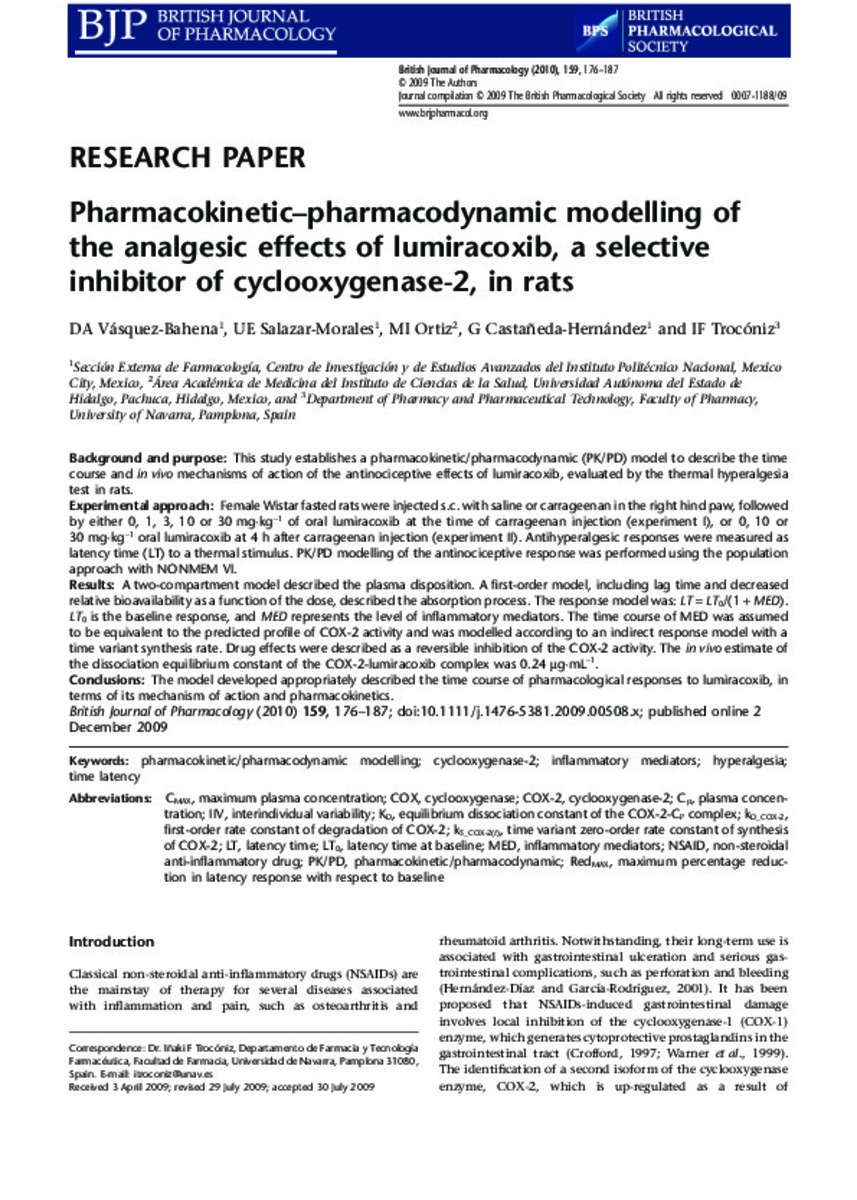Pharmacokinetic–pharmacodynamic modelling of the analgesic effects of lumiracoxib, a selective inhibitor of cyclooxygenase-2, in rats
Keywords:
Pharmacokinetic/pharmacodynamic modelling
cyclooxygenase-2
Inflammatory mediators
Hyperalgesia
Time latency
Publisher:
British pharmacological society
Citation:
Vásquez-Bahena DA, Salazar-Morales UE, Ortiz MI, Castañeda-Hernández G, Trocóniz IF. Pharmacokinetic–pharmacodynamic modelling of the analgesic effects of lumiracoxib, a selective inhibitor of cyclooxygenase-2, in rats. Br J Pharmacol. 2010 Jan;159(1):176-87.
Statistics and impact
0 citas en

0 citas en

Items in Dadun are protected by copyright, with all rights reserved, unless otherwise indicated.







